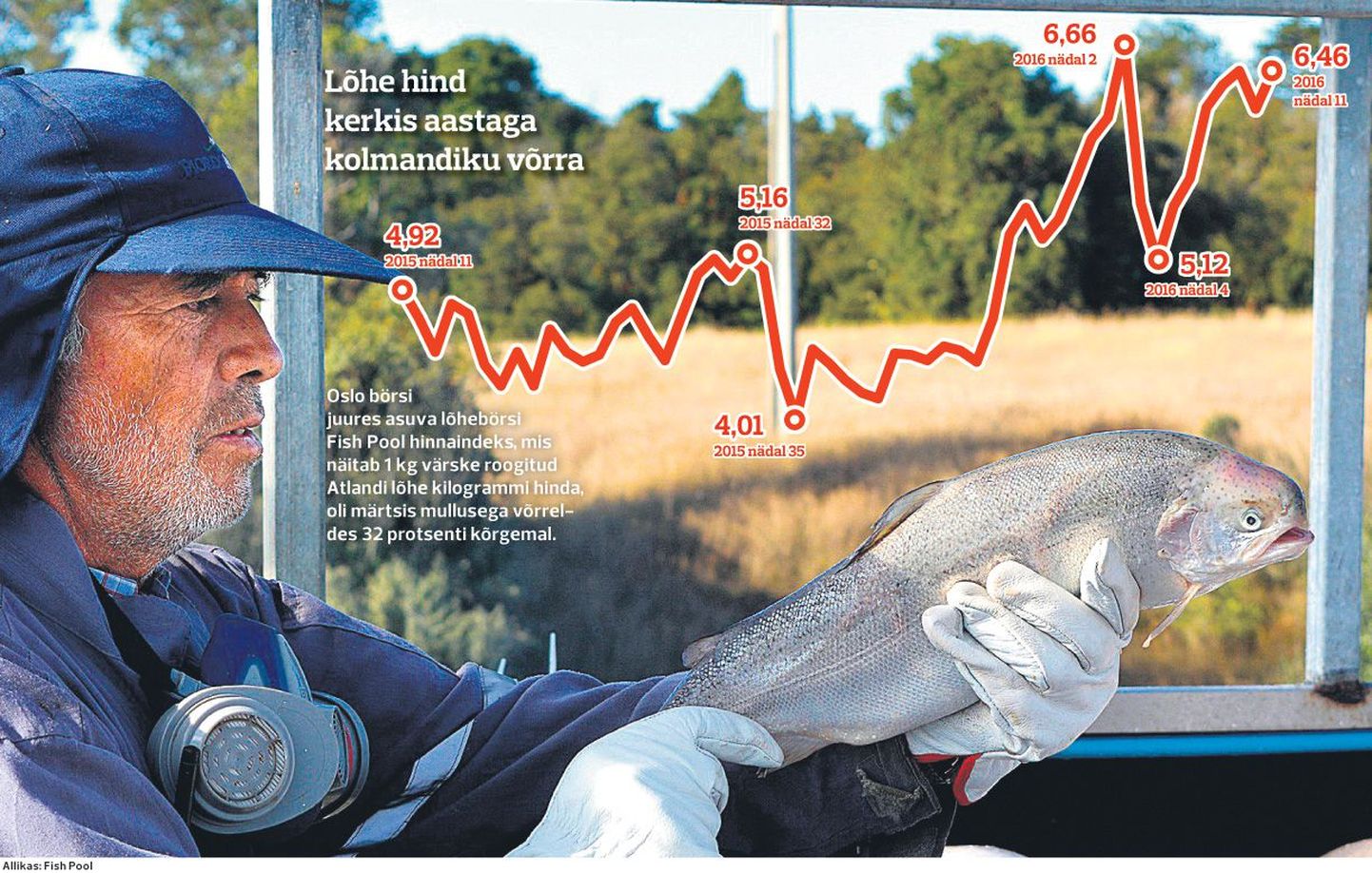«During the past years, global price fluctuations for salmon have been big and this has significantly affected choices by consumers,» said Coop Eesti Keskühistu purchasing manager Taavi Kontson.
«As global price has fallen, we have attempted to have campaigns to bring larger amounts of salmon into our stores and generally the consumers have been happy to accept the offers,» said Mr Kontson. «When salmon global market price is up, the consumers as a rule prefer other price offers on meat products.»
The Finns are also warning that the Chile-caused salmon gap on global market will boost demand for the main produce of their farms – rainbow trout. «Up to now, the Finnish rainbow trout has been rather cheap,» said Ms Sandelin, adding that Finnish fish producers have earned half what Norwegian colleagues have made.
Indeed, Meelis Vetevool confirmed that while rainbow trout is currently cheaper than salmon, its price is also rising along with salmon.
Estonian fish producer sees no price rise
CEO of Estonia’s largest trout farm Simuna Ivax, Hans Kruusamägi is not too optimistic. «Just a month ago I saw rainbow trout sold at stores, with taxes and everything, at €3.9 a kilogram,» he said. «If salmon price rises and rainbow trout with it, to then bring trout to a normal level, it is well. But I know not if we will see it.»

